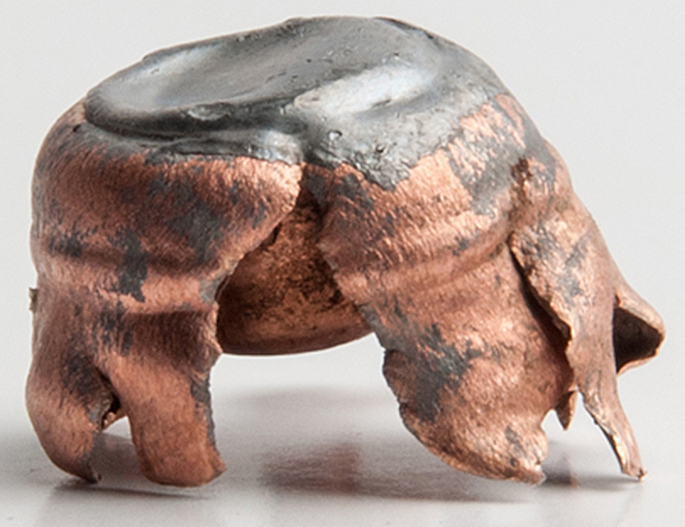The short answer, Mr. Bloom, is that the bullet in the video is not acting as a liquid.
But the fastest projectiles (well, shaped-charge liners made of metal) do become liquid, if briefly.
And the point of my long disquisition on equations of state was intended to convey that (a) the line between liquid and solid can be fuzzy at high velocities and energies, and (b) people have considered this exact question and arrived an answer.
That answer, to wit: when modeling high-speed deformations of ductile materials, you need to treat those materials as solids for part of the simulation and liquids for other parts of the simulation.
Looking at the video you linked to, I think one might argue that the lead acts as a liquid during part of the impact and then “freezes” when the forces diminish and the lead’s stiffness is once again a major force compared to the momentum, energy and strain rates.
If one rigidly defines a metallic solid as anything with a crystal structure, then no, by that definition, the lead in these videos is never liquid. But that’s kind of an absurd definitition, because then metallic glasses are also liquids, as they have no crystal structure.
But really, this is the sort of debate that happens late at night in freshman dorm rooms all across the country about this time of year. (e.g., "Did you know that glass is actually A LIQUID?!?!?)
Well, no, silica-based glasses are amorphous solids at room temperature, as are metallic glasses. But—not to get all liberal-arts on you—these taxa are human constructs. We can declare it a gas for all the bullet cares; it will behave the same way regardless.
I’ll call the bullet material a liquid if the material model for liquids predicts the observed behavior better than the material model for solids. But that’s just, like, my opinion, man.
